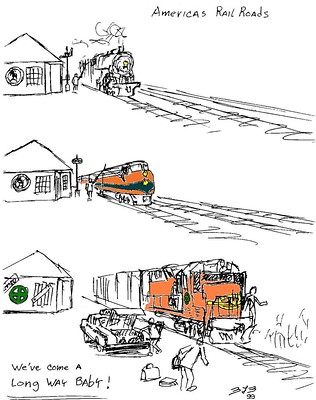HammerJack
Train Attendant
- Joined
- Jan 19, 2019
- Messages
- 61
I believe is double tracked from LA to El Paso. At one time UP had grand plans of competing with the BNSF's LA-CHI route (LOL).
Amtrak is part of the problem too. Watch this late SL when it arrives in Tuscon on Youtube. Tuscon is a 50 minute schedule service stop, it takes 20 minutes to refill the Genesis with one fuel truck and for INS to let Rover walk the train, yet watch a 5 hour late SL sit there for 30 minutes more. I wander if Amtrak is as concerned about time as the pax.
Sometimes I do wonder about the sense of urgency of Amtrak crews, specifically on late trains at long stops.
On the flip side, some crews do care. One time I saw a conductor just board everyone (coach and sleepers) at one door to prevent a pull-down move at a station. The sleeper passengers had to walk through the train, but it saved a few minutes time.



















